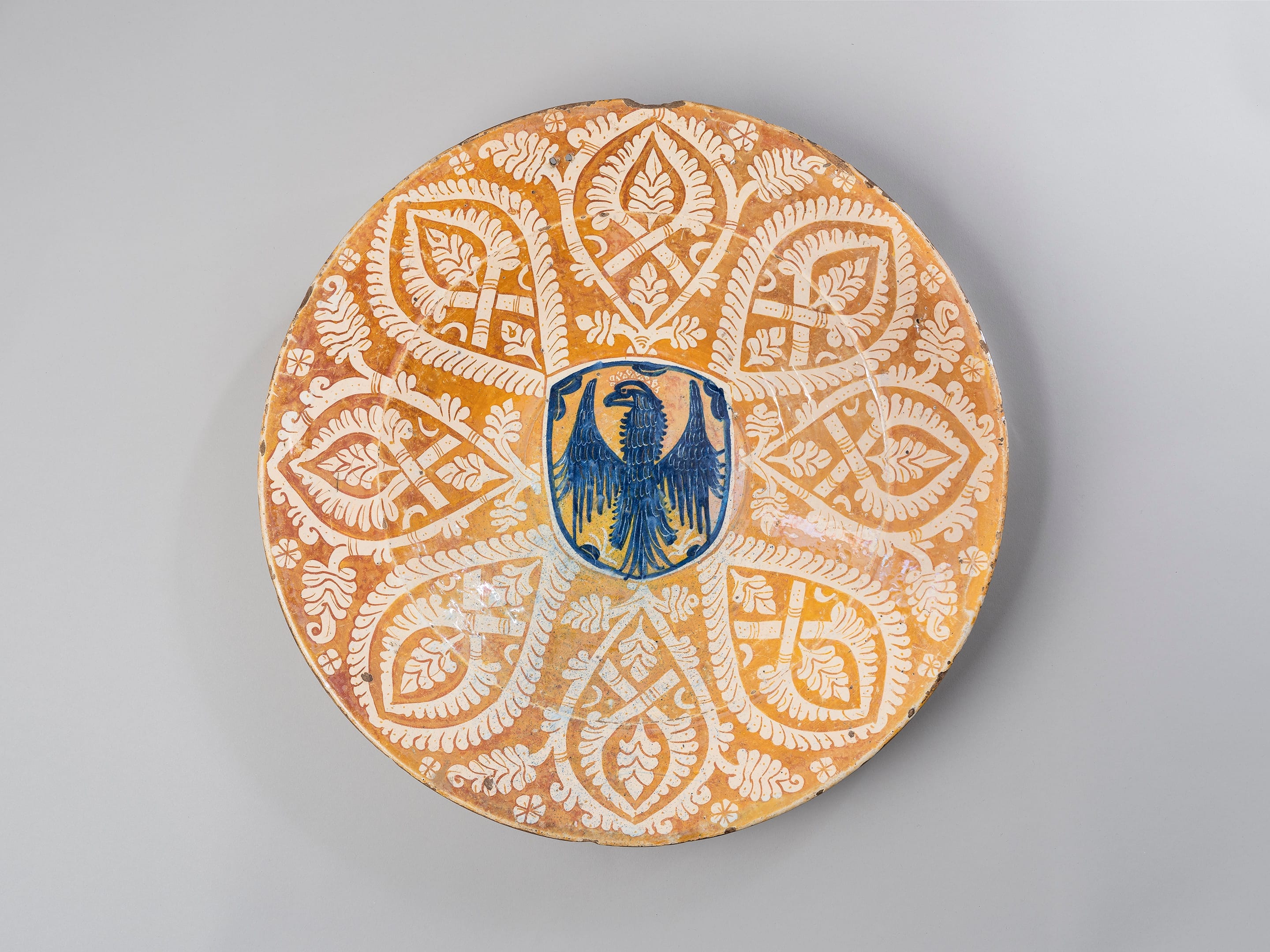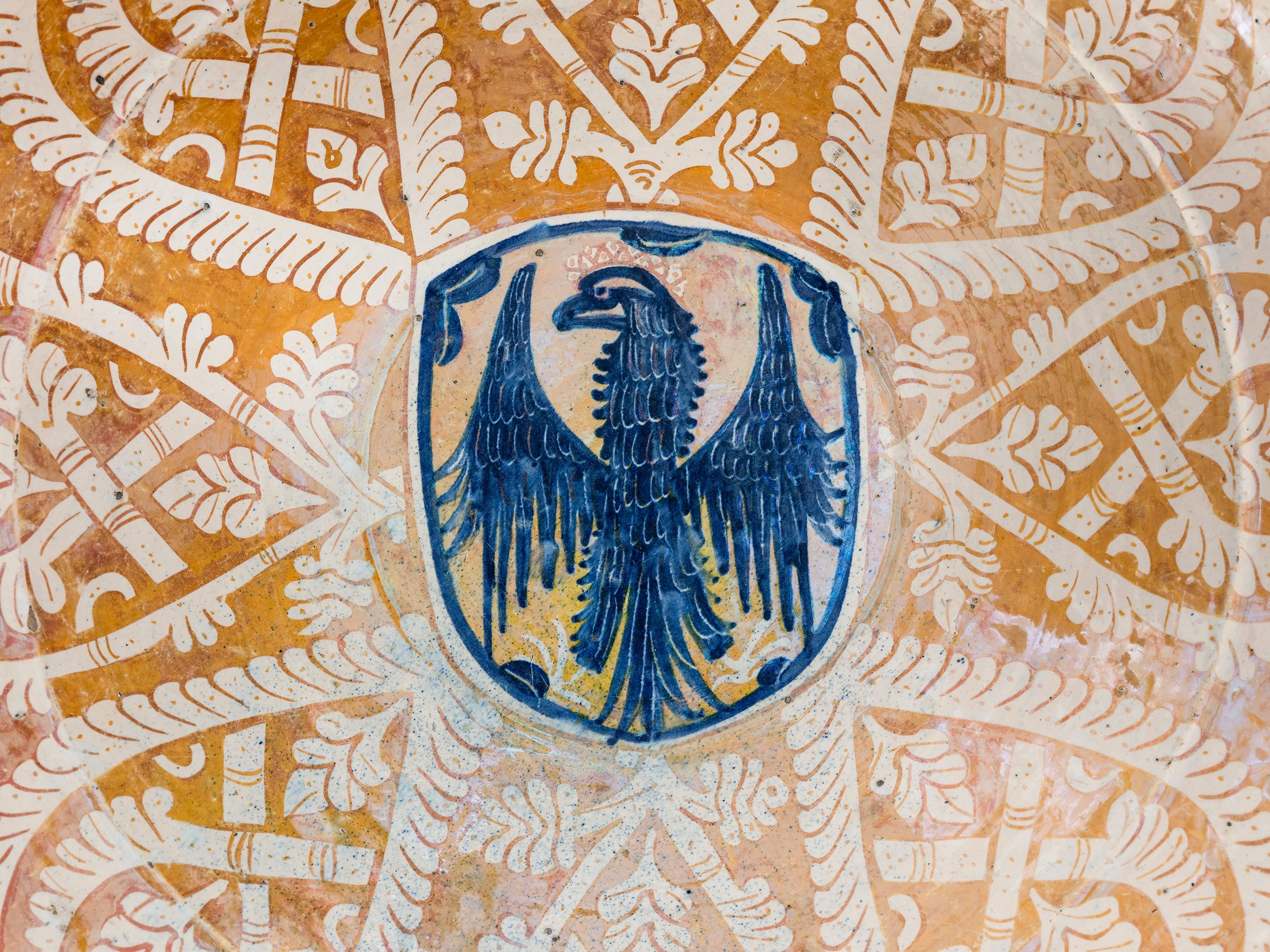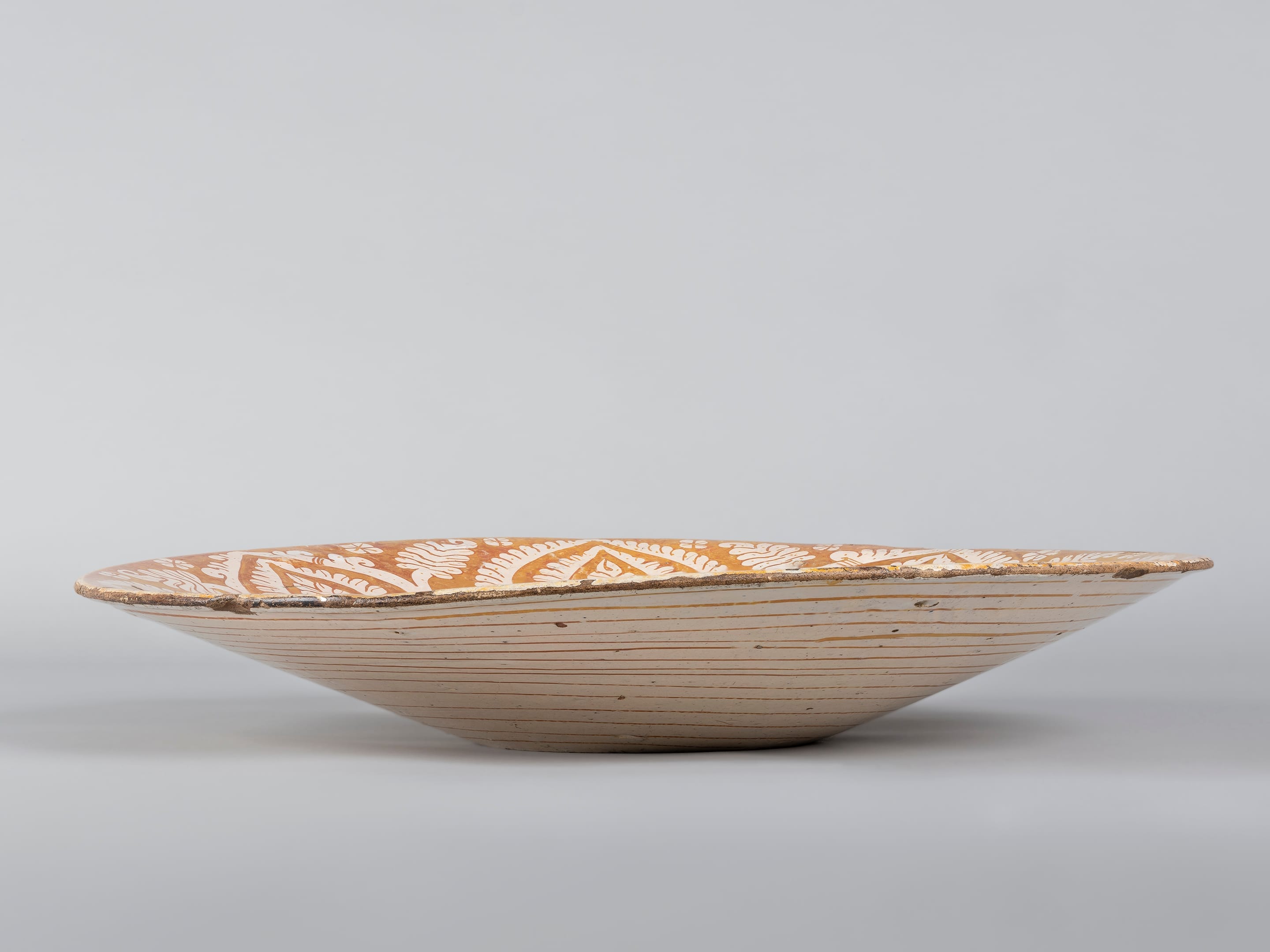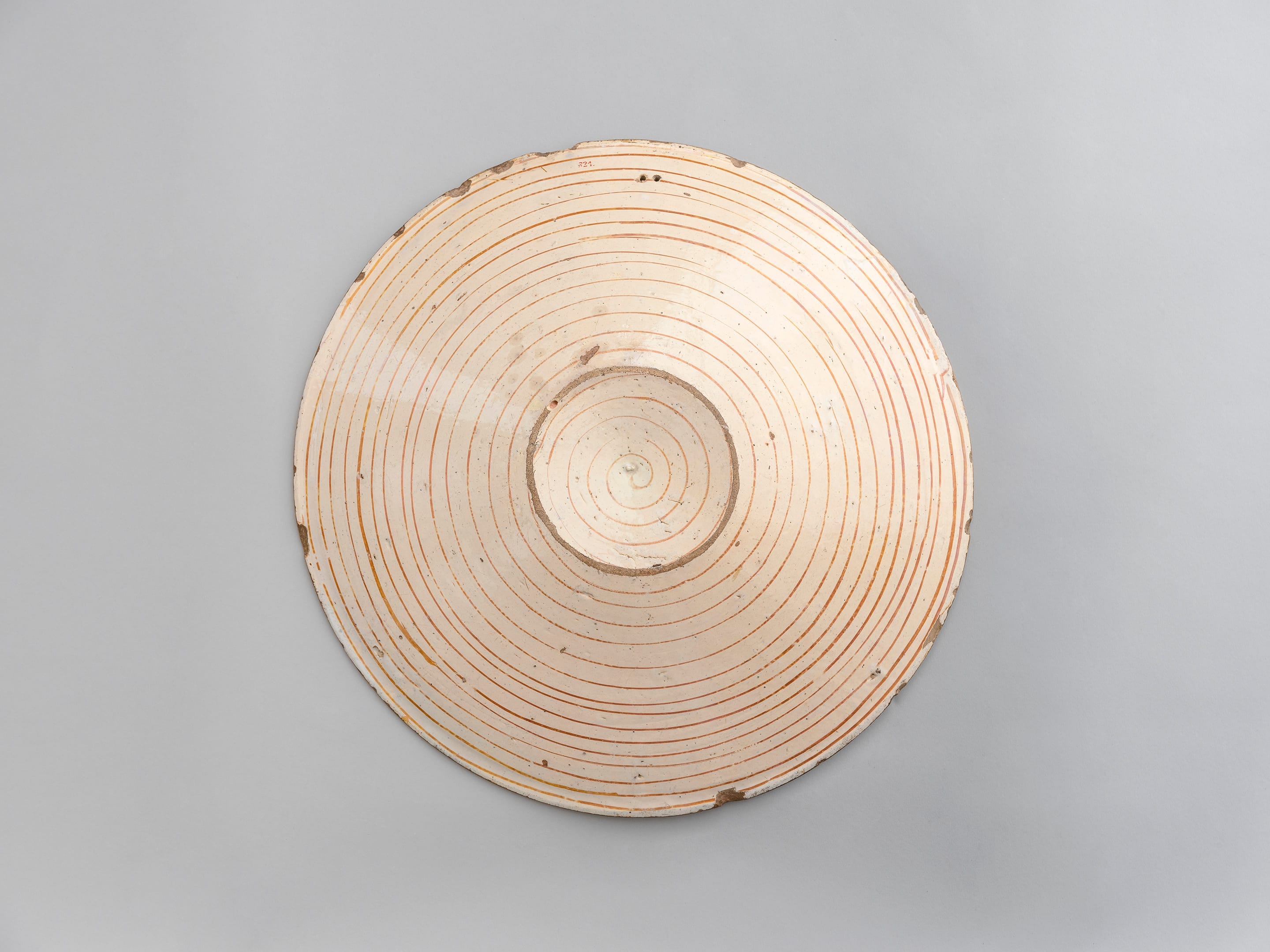




images@louvreabudhabi.ae
Basin Decorated with the Heraldic Shield of an Eagle
| Date | production date: 1450-1470 |
Artwork Details
| Inventory Number | LAD 2021.001 |
| Geography | production place: Manises, Spain |
| Category | container, vase, tableware |
| Artistic Period | Middle Ages |
| Material/Techniques | cobalt blue painting and copper lustre |
| Dimensions | D.: 46.2 cm |
| Owner | Louvre Abu Dhabi |
| Current Location | On display |